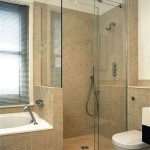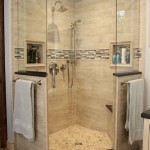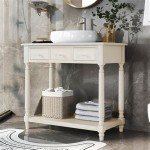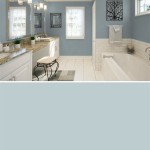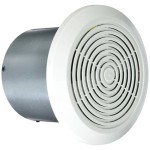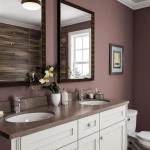Bathroom Accessories for the Disabled: Enhancing Safety and Independence
Bathrooms, often small and confined spaces, can present significant challenges for individuals with disabilities or mobility limitations. Standard bathroom fixtures and layouts frequently fail to accommodate the specific needs of users with physical impairments, increasing the risk of falls, injuries, and a loss of independence. To address these issues, a wide range of bathroom accessories designed specifically for the disabled population has emerged, offering solutions that promote safety, comfort, and accessibility. These accessories, when carefully selected and properly installed, can transform a potentially hazardous environment into a user-friendly and empowering space.
The goal of bathroom accessibility modifications is to enable individuals to perform essential hygiene tasks with minimal assistance, fostering self-reliance and preserving dignity. This involves considering various factors, including mobility range, strength, balance, and cognitive abilities. A comprehensive assessment of the individual's specific needs and limitations is crucial in determining the appropriate bathroom accessories to install. This often involves consulting with occupational therapists, accessibility specialists, or experienced contractors who can provide guidance on layout optimization and product selection.
It is important to note that bathroom accessibility retrofits are not one-size-fits-all solutions. Individual requirements will vary significantly depending on the nature and severity of the disability, the design of the existing bathroom, and personal preferences. The following sections will delve into specific categories of bathroom accessories commonly used to enhance accessibility, outlining their features, benefits, and installation considerations.
Grab Bars: Providing Stability and Support
Grab bars are arguably the most fundamental and widely used bathroom accessory for disabled individuals. These sturdy bars provide a secure handhold, assisting with balance, stability, and transferring on and off the toilet, shower, or bathtub. They are typically constructed from stainless steel or coated metal to prevent corrosion and provide a non-slip surface. The placement and configuration of grab bars are critical to their effectiveness.
For toilet areas, grab bars are usually installed on the wall adjacent to the toilet and/or behind the toilet. Side-mounted grab bars assist with sitting and standing, while rear-mounted bars can be helpful for maintaining balance while seated. The height and length of the grab bars should be customized to the user's reach and height. It is essential to ensure that the grab bars are securely anchored to the wall studs to withstand the weight and force applied during use. Professional installation is highly recommended to guarantee structural integrity.
In shower and bathtub areas, grab bars are strategically positioned to aid with entering and exiting the bathing area, as well as maintaining balance while showering or bathing. Vertical grab bars can assist with standing, while horizontal grab bars provide support for seated activities. Angled grab bars are also available and can be particularly useful for individuals with limited arm strength or range of motion. Again, secure mounting to wall studs is paramount for safety.
Beyond placement, the type of grab bar itself can vary. Straight grab bars are the most common, but other options include: hinged grab bars that can be folded up when not in use, providing more space; suction cup grab bars that offer temporary solutions, although they are generally not recommended for long-term use due to their limited weight-bearing capacity; and floor-to-ceiling grab bars that provide a robust support system and are particularly useful in situations where wall mounting is not feasible.
The selection of grab bars should consider not only their functionality but also their aesthetic appeal. Modern designs offer a variety of finishes and styles that can seamlessly integrate into the bathroom décor, avoiding the institutional look that can sometimes be associated with accessibility products.
Toilet Seat Risers and Bidet Seats: Facilitating Hygiene and Comfort
Standard toilet heights can pose a significant challenge for individuals with limited mobility or joint pain. Toilet seat risers elevate the seat height, making it easier to sit and stand. These risers come in various heights, typically ranging from two to six inches, allowing for customization to the user's specific needs. They are typically made of durable plastic and are designed to fit securely onto most standard toilet bowls.
Toilet seat risers can be installed with or without arms. Risers with arms provide additional support and leverage for users who need extra assistance with transferring. The arms are usually removable to allow for easier cleaning and maintenance. It is crucial to choose a riser that is stable and secure, minimizing the risk of slippage or movement during use. Some models feature locking mechanisms to further enhance stability.
Bidet seats offer an alternative or complement to traditional toilet paper use. They feature a nozzle that sprays water to cleanse the perineal area, providing a more hygienic and comfortable experience. Bidet seats can be particularly beneficial for individuals with limited dexterity, mobility restrictions, or skin sensitivities. They can reduce the need for excessive wiping, minimizing irritation and promoting skin health. Some models include features such as adjustable water temperature, pressure, and nozzle position, allowing for personalized comfort.
Advanced bidet seats may also incorporate features such as warm air dryers, heated seats, and deodorizers, further enhancing the user's comfort and convenience. Some models are equipped with remote controls, making them easier to operate for individuals with limited reach or dexterity. Installation typically involves replacing the existing toilet seat with the bidet seat and connecting it to a water supply. Some models require an electrical outlet for power. Professional installation is recommended to ensure proper plumbing and electrical connections.
Shower and Bathing Aids: Promoting Safe and Comfortable Bathing
Showers and bathtubs present numerous safety hazards for individuals with disabilities. Slippery surfaces, high thresholds, and confined spaces can all increase the risk of falls and injuries. A variety of shower and bathing aids are available to mitigate these risks and promote a more safe and comfortable bathing experience.
Shower chairs and benches provide a stable and supportive seating option for individuals who have difficulty standing for extended periods. They come in various styles, including: fixed-height chairs, adjustable-height chairs, and folding benches that can be easily stored when not in use. Some models feature backrests and armrests for added comfort and support. The seat should be made of a non-slip material to prevent slipping. It is crucial to choose a chair or bench that is sturdy and stable, with a weight capacity that is appropriate for the user.
Transfer benches are designed to facilitate safe transfers in and out of the bathtub. These benches extend over the side of the tub, allowing the user to sit on the bench and then slide or scoot across into the tub. They are particularly useful for individuals who have difficulty stepping over the high bathtub threshold. Transfer benches typically feature adjustable legs to accommodate different bathtub heights. It is important to ensure that the bench is securely positioned and that the user has a stable surface to grip during the transfer.
Handheld showerheads provide greater control over the direction and flow of water, making it easier to wash while seated or standing. They are particularly useful for individuals with limited reach or mobility. Handheld showerheads typically come with a long hose and a variety of spray settings. The hose should be long enough to allow the user to reach all parts of their body without straining. Some models feature pause buttons that allow the user to temporarily stop the flow of water, conserving water and preventing scalding.
Walk-in tubs offer a safer and more accessible alternative to traditional bathtubs. They feature a low threshold and a watertight door that allows the user to enter and exit the tub without having to step over a high barrier. Walk-in tubs typically include a built-in seat and grab bars for added safety and comfort. They may also feature therapeutic jets that provide massaging action to relieve muscle pain and stiffness. Walk-in tubs are often more expensive than traditional bathtubs, but they can provide a significant improvement in safety and accessibility.
Beyond these primary accessories, other helpful additions include non-slip mats for floors and tubs, extended-reach sponges and brushes, and lever-handled faucets for easier operation. The overall goal is to create a bathing environment that is both safe and comfortable, allowing individuals to maintain their independence and dignity.
In conclusion, carefully selected and properly installed bathroom accessories can significantly enhance the safety, comfort, and independence of disabled individuals. By considering individual needs and limitations, and by consulting with professionals when necessary, it is possible to transform a potentially hazardous bathroom into a user-friendly and empowering space. Prioritizing accessibility in bathroom design improves the quality of life and promotes increased self-reliance.

Bathroom Equipment For Seniors And Disabled

Bathroom Aids For Disabled Bathing Bath Accessories

Bathroom Aids For Disabled Bathing Bath Accessories

Disabled Bath Aids Bathroom Accessories Age Co Mobility

Disabled Toilets Doc M Packs Bathing Grab Rails Alarms Mobility S

Pin On Handicapped Accessories

Safety Nylon Disabled Bath Grab Bar For Bathroom Accessories

Check Out These Bathroom Accessories For Disabled People Newz Hook Disability News Changing Attitudes Towards

Bathroom Aids For Disabled Bathing Bath Accessories

Highlighting Parts Of Document M Disabled Toilets For Bed And Breakfasts
See Also

